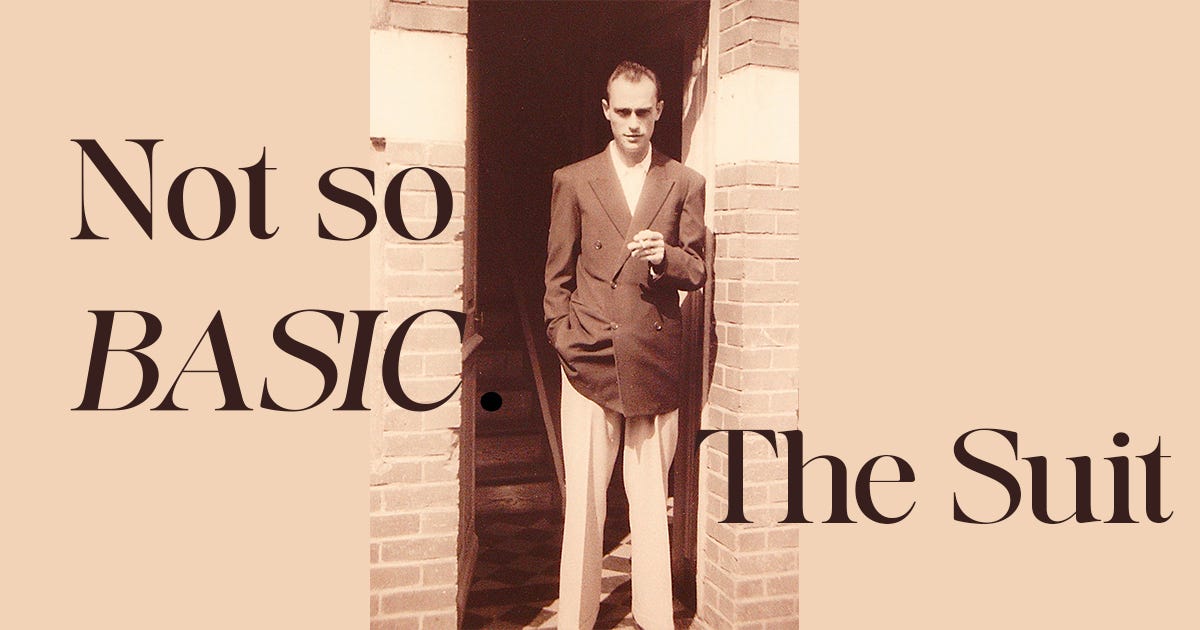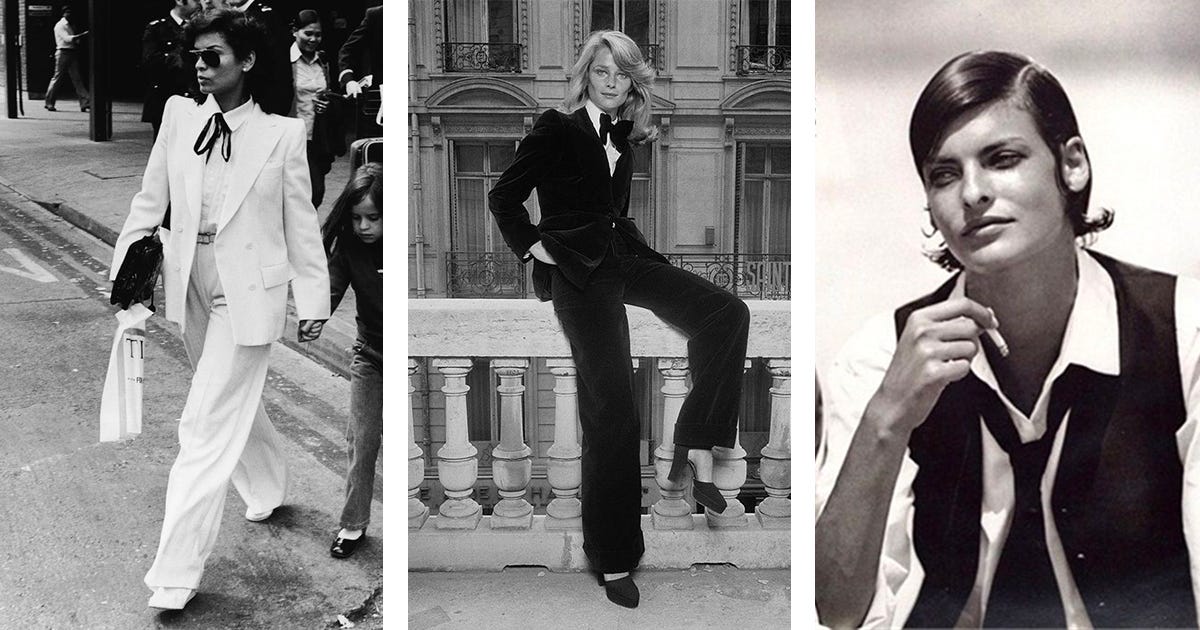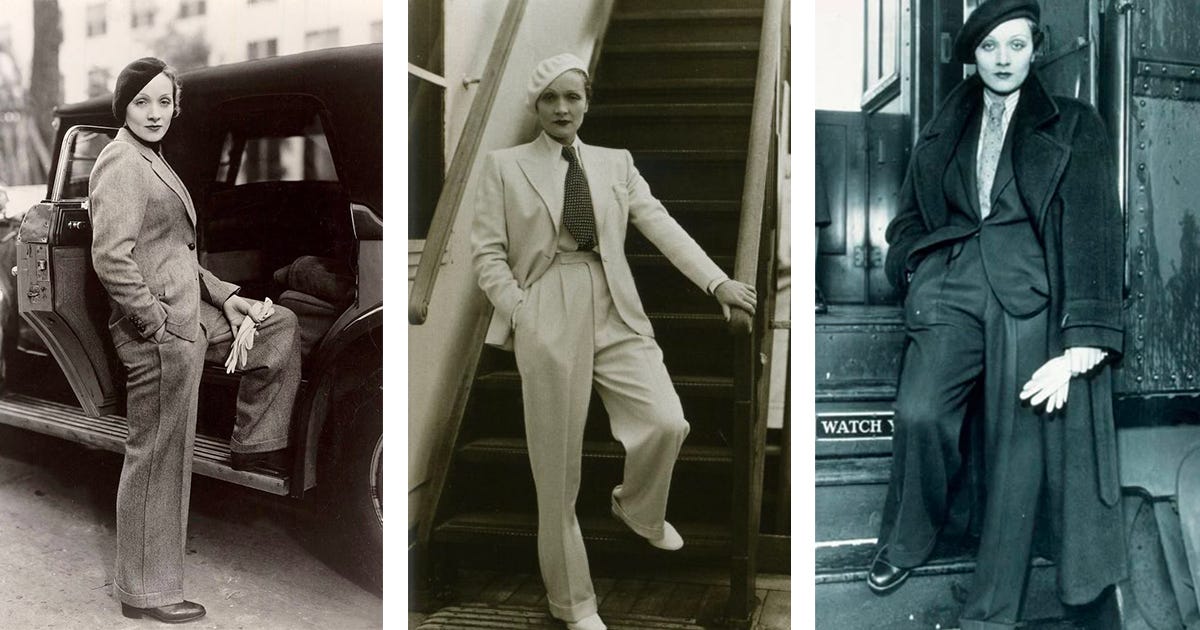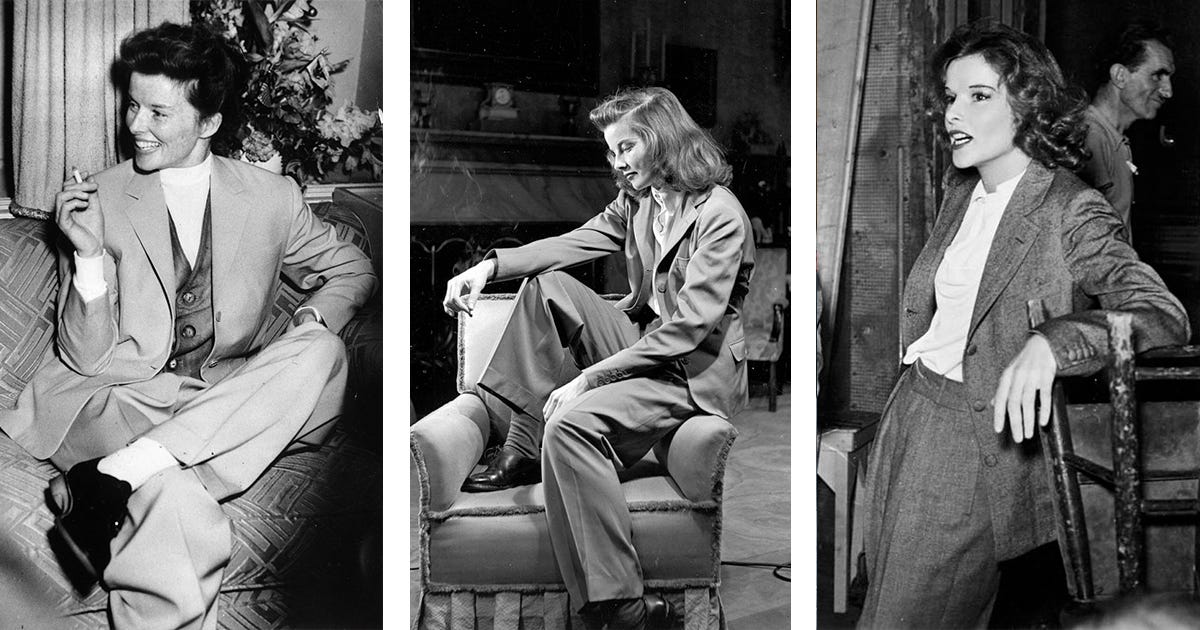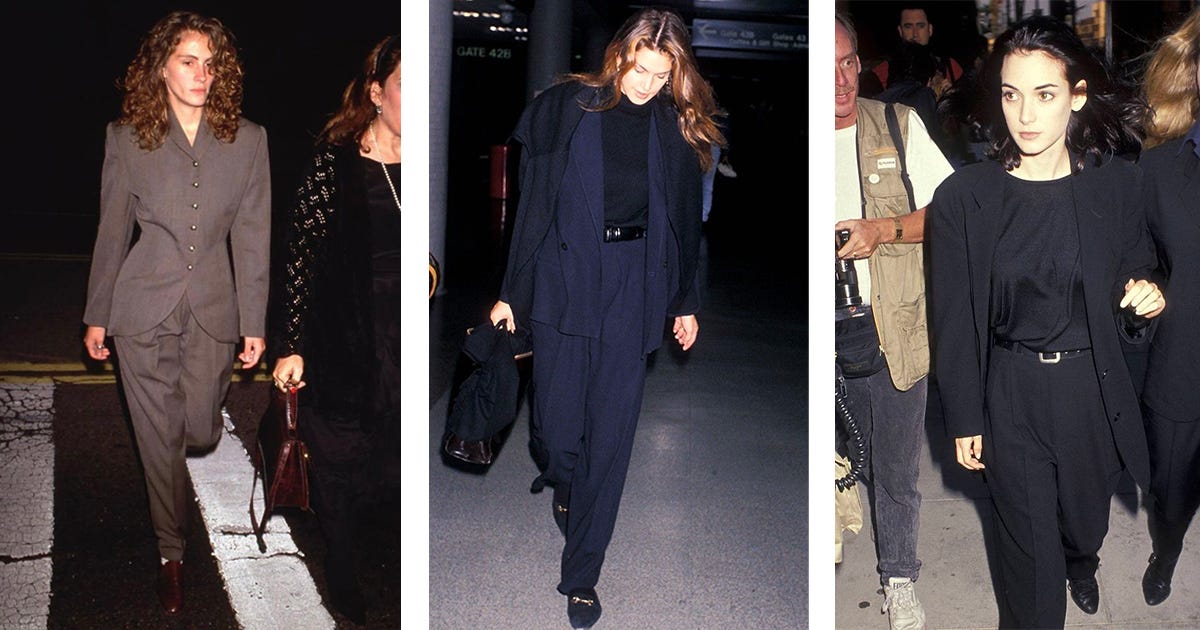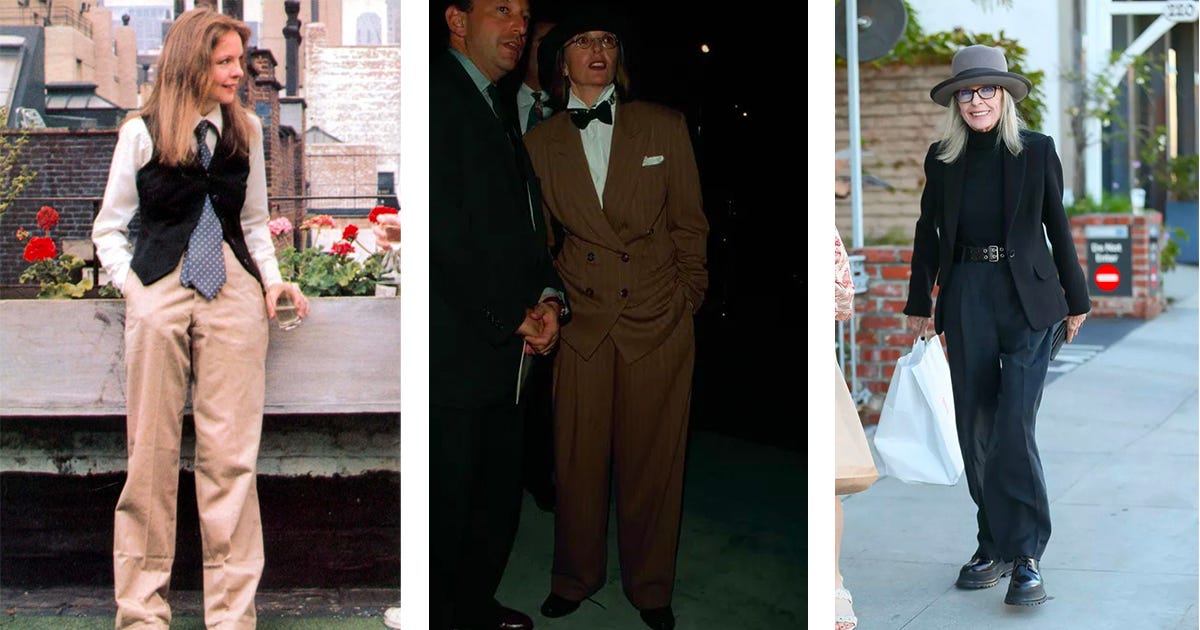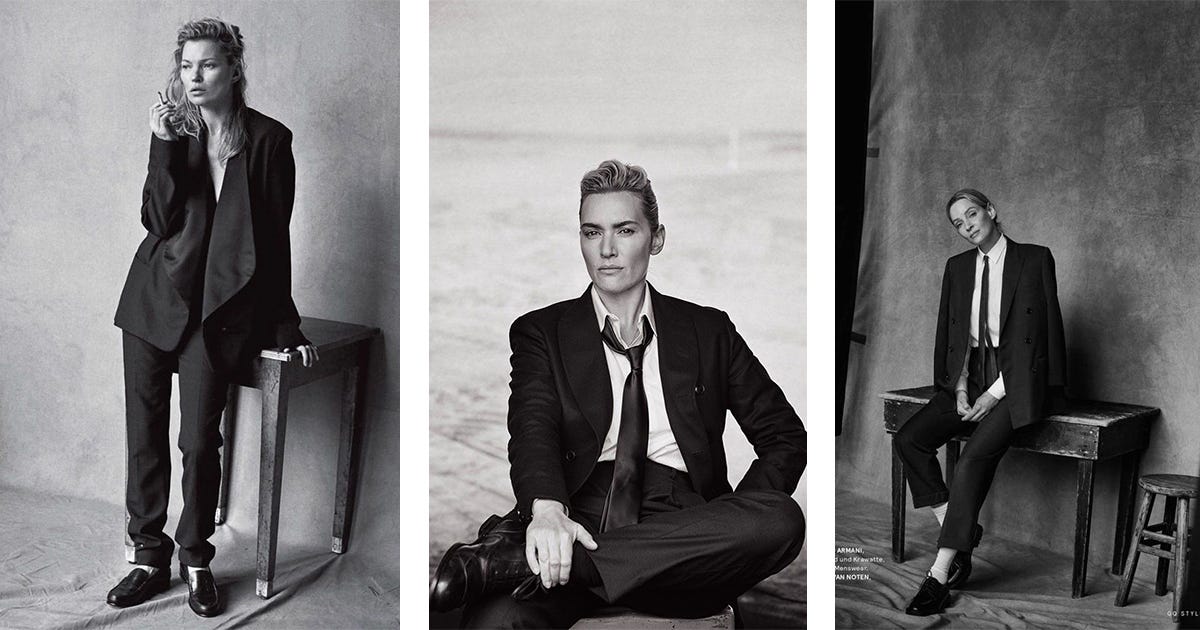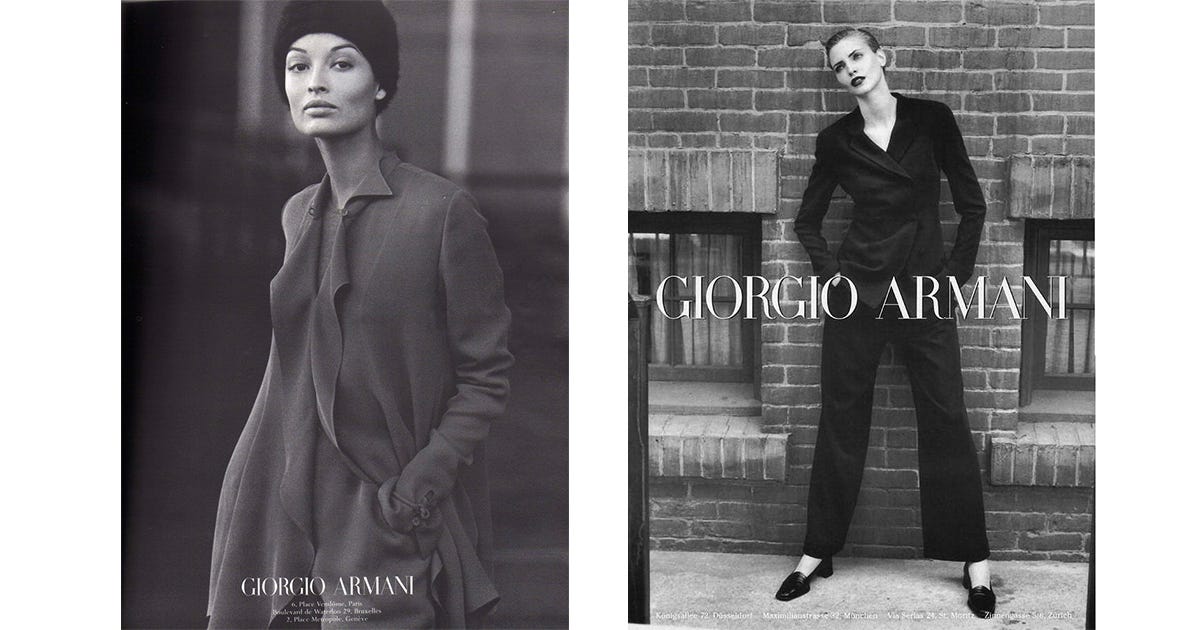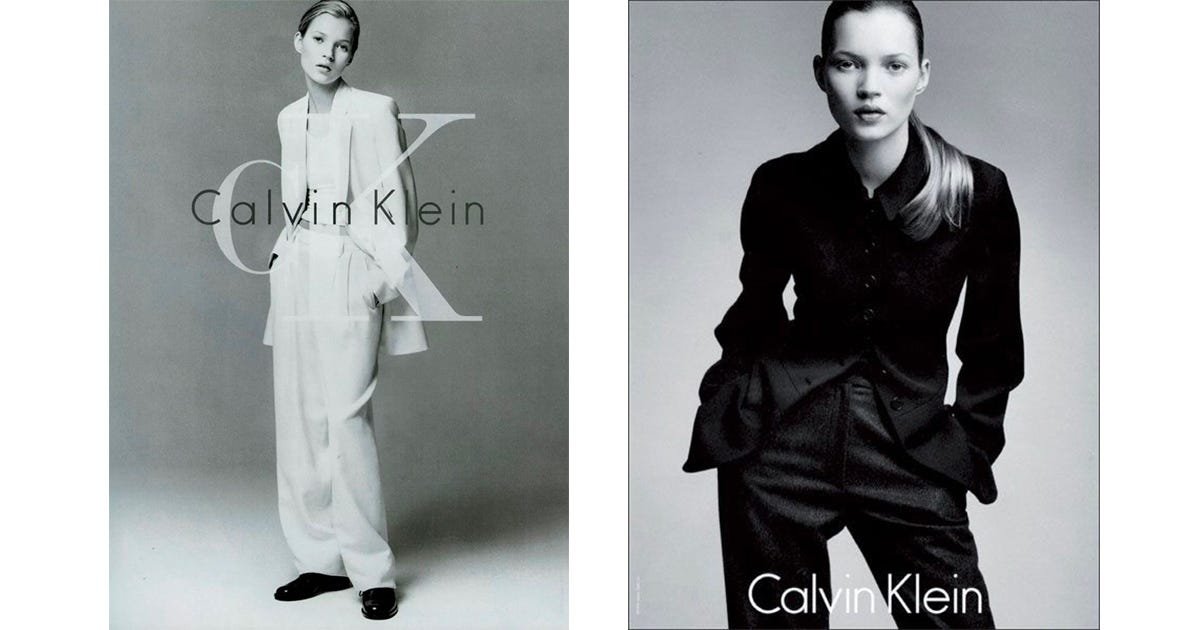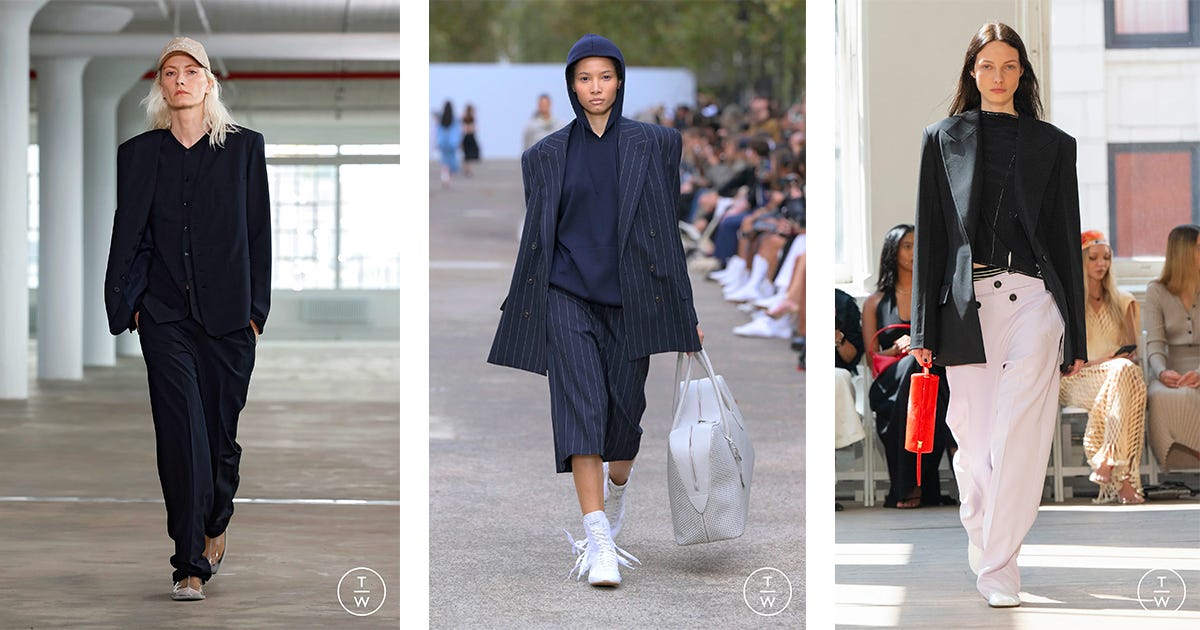I still remember the first time I truly noticed the power of a suit. It wasn’t on a magazine cover, nor on a fashion runway. It was in an old photograph of my grandfather, standing confidently in the doorway, wearing a perfectly tailored double-breasted suit. The fabric draped effortlessly, the silhouette structured yet natural. He had an allure that seemed almost effortless, an elegance that came not just from the clothes but from the way he carried himself. That image, and many others of him in similar impeccable tailoring, ignited something in me—a lifelong fascination with suits.
That fascination only deepened over time. I found myself drawn to the sharp lines and quiet authority of a well-cut jacket, whether on men or women. It was Bianca Jagger in her white YSL suit, Charlotte Rampling in masculine tailoring, or the unmistakable black-and-white photography of Peter Lindbergh, where suits took on a cinematic, almost mythical quality. There is something undeniably magnetic about the suit—a piece that has evolved far beyond its origins, transcending gender and time.
The Suit and Its Journey into Women’s Fashion
For centuries, the suit was the armor of men, a uniform of power and propriety. Women were largely excluded from this realm of tailoring—until they decided otherwise. In the 1930s, Marlene Dietrich and Katharine Hepburn unapologetically adopted men’s suits, challenging conventions and rewriting the rules of femininity. By the 1960s, Yves Saint Laurent introduced Le Smoking, giving women a tuxedo of their own, a revolutionary act that blurred the lines between masculine and feminine.
From that moment on, the suit became an instrument of self-expression for women. It was a symbol of rebellion in the punk movement, a power statement in the corporate world of the 1980s, and a minimalist staple in the 1990s. Today, it has become a canvas—oversized, deconstructed, cinched at the waist, cropped, or flowing. The possibilities are endless, and the suit remains as potent as ever.
Women Who Made the Suit Their Signature
Certain women have embraced the suit not as an occasional fashion statement, but as an extension of their identity. Bianca Jagger was a vision in white at Studio 54, exuding a sensual power in her YSL tuxedos. Charlotte Rampling’s androgynous elegance, with her penchant for crisp tailoring, remains unforgettable. Diane Keaton brought an irreverent charm to the suit in Annie Hall, making it synonymous with effortless cool. Today, figures like Tilda Swinton, Zendaya, and Cate Blanchett continue to redefine what a suit can be, proving that true style knows no boundaries.
The Suit Through the Lens of Photography
Few photographers have captured the essence of the suit quite like Peter Lindbergh. His black-and-white images of women—Kate Moss in an oversized blazer, Linda Evangelista in pinstripes, Uma Thurman exuding quiet power in classic tailoring—highlight the inherent drama of the suit. The structured silhouette against a raw background, the interplay of light and shadow, the way fabric moves with the body—it all tells a story. Calvin Klein and Armani, too, have long understood the enduring appeal of the suit, frequently showcasing it in their campaigns as a timeless symbol of strength and sensuality.
The Suit in 2025: A Runway Recap
Designers continue to reinvent the suit, proving its adaptability season after season. For Spring/Summer 2025, Christian Dior reimagines the suit with mythological undertones, featuring asymmetrical cuts and cinched waists. Tibi presents an unstructured, effortlessly cool take, while Jason Wu brings fluidity to sharp tailoring. Saint Laurent remains faithful to the smoking jacket’s roots, crafting razor-sharp silhouettes with a contemporary edge. Proenza Schouler experiments with metallic detailing, and Bottega Veneta’s take on power dressing merges oversized proportions with unexpected textures. The message is clear: the suit is here to stay, but its form is ever-evolving.
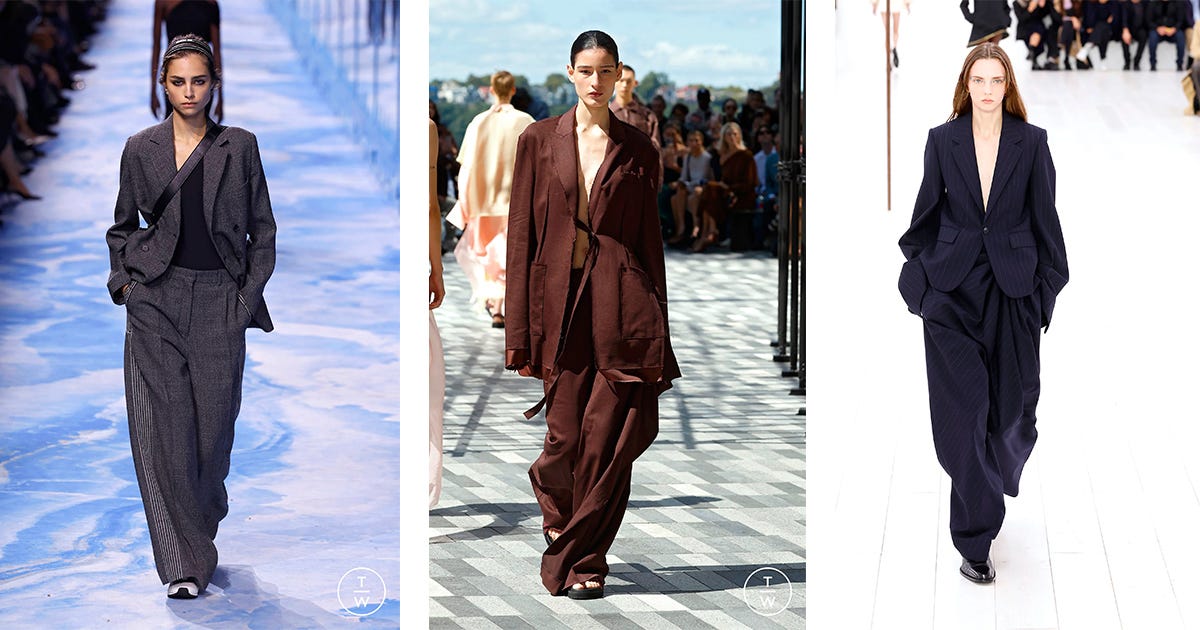
More Than Just Fabric and Stitching
A suit is never just a suit. It carries meaning—of confidence, rebellion, elegance, and identity. Whether it’s worn with precision or nonchalance, dressed up or broken apart, it adapts to the wearer, not the other way around. It’s a paradox: structured yet fluid, traditional yet radical, powerful yet intimate. And that’s what makes it anything but basic.
And as I look back at that photograph of my grandfather, standing with quiet assurance in his suit, I realize that my love for tailoring has always been about more than just fashion. It’s about presence, about storytelling, about the silent strength that the right suit can convey. Just like his, my suits aren’t just garments—they are echoes of the past, shaped by personal history and worn with intention.



